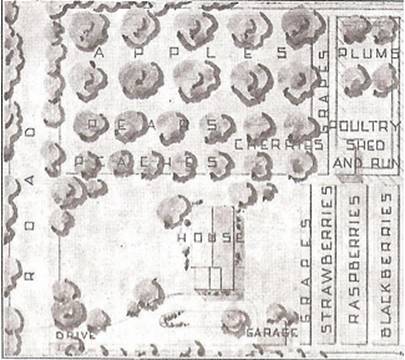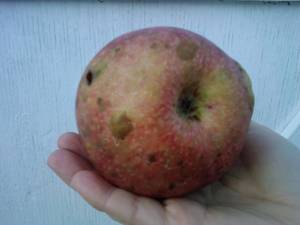

|
Updates to activities as performed |

|
Any farm would have it’s own orchard. Here in this idealized small farmstead, there are 10 apple trees,4 pear trees, 5 peach trees, and 4 cherry trees in one quadrant. The grapes and berries are planted in rows, while the 4 plum trees are in the chicken yard. The problem with this and any set-up is that all fruit trees and brambles are susceptible to a disease called, fire blight. This means that diligence is needed to keep this destructive disease out of the orchard.
· First, know how this disease presents itself in the fruit trees that you want to plant on your farm. One year, we wanted to add pears to the orchard. So, we went to a well respected gardening center that has been in business since 1878. However, upon close inspection, there was fire-blight on half of the trees. Even if only ‘disease-free’ trees were purchased, fire-blight is easily transmitted and the tree could be infected, but not showing symptoms. · Secondly, read the agricultural extension papers for your area and follow the practices suggested. The spraying needs of an apple tree in the Pacific Northwest is different for us here in the Southeast. · Finally, do not wait to treat young trees until they start bearing fruit. In my opinion, failure to properly spray young trees actually may be the reason a tree becomes infected. Think about it; bees are part of the fire blight cycle; they are visiting the blossoms on the young tree, too. |


